#miccosukee tribe
Explore tagged Tumblr posts
Text


brothers Lee & Stephen Tiger of the band, Tiger Tiger; young fair-goers at the Miccosukee Arts and Crafts Festival (1974)
#tiger tiger#indigenous#miccosukee#1974#florida#traditional clothing#70s fashion#musician#band#lee tiger#stephen tiger#70s families#miccosukee tribe#child#singer#mikasuki#boots
49 notes
·
View notes
Text



native nate compilation before i go off ( new pic & two reposts from 2020)
ive always disliked that the tribe he's from is entirely fictional & plays into a lot of stereotypes. so instead of that i have a headcanon instead that he is miccosukee! they're a nation from florida who live in the everglades and also wrestle alligators as a tradition, which i think is all pretty relevant to nathan. they are also a beautiful tribe with cool traditional dress & jewelry

709 notes
·
View notes
Text
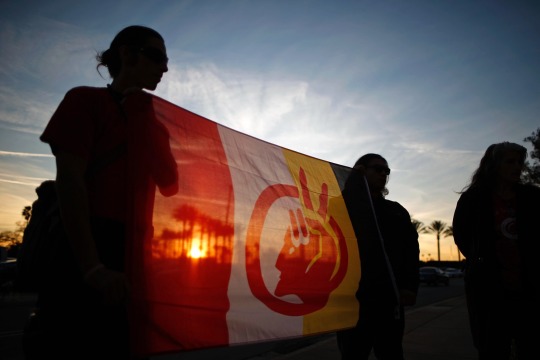
Native American and First Nations Flag Wars: Round 1
This tournament focuses on the flags of indigenous groups of the United States and Canada in honor of National American Indian Heritage Month. Thank you to everyone for your submissions! I think this is going to be a fun tournament with some great flags!
Round 1:
1. Huu-ay-aht First Nations vs. Miccosukee vs. Mashantucket Pequot Tribe vs. Teslin Tlingit Council
2. Nez Perce vs. Pimicikamak Cree Nation vs. United Keetoowah Band of Cherokee Indians vs. Cahto
3. Anishinaabe vs. Clatsop vs. Métis vs. Upper Skagit Indian Tribe of Washington
4. Cherokee Peace Flag vs. Peguis First Nation vs. Haisla vs. Chief of the Secwépemc
5. Jatibonicu Taino Tribal Nation vs. Missisquoi Abenaki Tribe vs. Colorado River Indian Tribes vs. Nisga'a
6. Chinook Nation vs. Hopi Nation vs. Mi'kmaq (horizontal) vs. Pawnee Nation
7. Northern Cheyenne Indian Reservation vs. Ahtahkakoop Cree Nation vs. Cowasuck Band of the Pennacook-Abenaki People vs. Tłı̨chǫ
8. Inuvialuit vs. Seminole Tribe of Florida vs. Mohawk Warrior Society vs. Eel Ground First Nation
9. American Indian Movement vs. Navajo vs. Natchitoches Tribe of Louisiana
10. Secwépemc vs. Pine Ridge Indian Reservation vs. Arctic Athabaskan Council
11. Tahltan Nation vs. Blackfeet Nation vs. Musqueam
12. Santa Ynez Band of Chumash Mission Indians vs. Haudenosaunee/Iroquois vs. Poarch Band of Creek Indians
13. Haida vs. Piapot First Nation vs. Ninilchik
14. Inuit Tapiriit Kanatami vs. Kitchenuhmaykoosib Inninuwug First Nation vs. Arapaho
15. Mi'kmaq Nation vs. Lax Kw'alaams Band vs. Pascua Yaqui Tribe
16. Cherokee vs. Ute Indian Tribe vs. Robinson Rancheria of Pomo Indians of California
#flags#vexillology#native american and first nations flag wars#tournament#brackets#native american#first nations
24 notes
·
View notes
Text
Swamp Witch Travels: The Everglades
The Seminole War that never ended, a charm to Split a Storm and an Ancient Island. For centuries, the Everglades has been the object of wonder of many influential Floridian figures who each recognized its immense beauty and power. This River of Grass is a major center of life and biodiversity, as well as mysteries and Spirits uncharted, but will it still be around for the Swamp Witches of tomorrow?
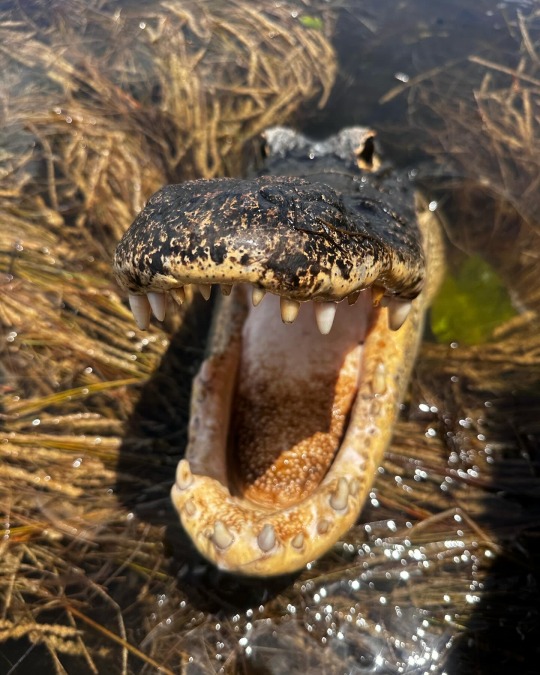
The Everglades is going to shatter all of your preconceived notions about Swamps. It is a place of great power and duality. On one hand, this aqueous Land is covered in sparkling, clear, MOVING water. This water is the Life and Blood of the state, flowing from the Heart of the Everglades, Okechobee (Big Lake) The health of this ecosystem in turn affects the entire country. On the other hand, a place of Danger, Death and Rot, but for the purpose of Cleansing and Purification (not just rot for rot’s sake). As the water flows through this vast ecosystem, it is cleared of pollutants by plants and limestone while washing away scars left by man on this Land, until all is returned anew. It is a multifaceted, firm but gentle Spirit.
The Everglades is a union, a pact almost, between the Land and the Water to form the Swamp we know and love.
I am no stranger to the Glades. I was born and raised in the western Everglades, in the Big Cypress water basin. Fakahatchee and Picayune Strand were favorites of my parents as I was growing up, and we lived way out in the woods anyways so I always feel at home in the Glades. Many of my Spirits who are intrinsically tied to me, one might call a Spirit Guide or Angel, feel connected to Swamps and places where Water and Land converge. The Everglades is my home, but it is also a Spirit Ally, and a sacred place to the modern Indigenous Peoples of Florida, including the recognized and unrecognized Seminole and Miccosukee.
(PSA: this post will likely be part of a series only scratch the surface of the intricacies related to the Glades.)
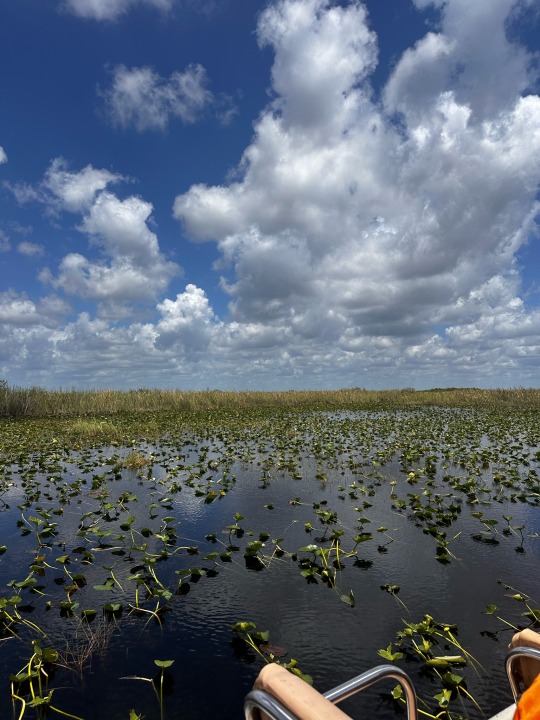
Pa-Hay-Okee, “Grassy Waters”
Pa-Hay-Okee is the Seminole-Mikasuki name for the Everglades. I was blessed to be able to take a trip to see the Real Florida when I took an airboat ride with Buffalo Tiger Airboats, owned and operated by Betty Osceola. Betty is a conservationist and member of the Miccosukee tribe, located in the Eastern Everglades. The Seminole and Miccosukee are the descendants of various groups of Florida’s Original People from all over the state. The relationships and history of Florida’s Indigenous groups is complex. Before colonization and to this day we have had multiple groups who all have different beliefs, cultures, origins, and relationships. Today, we have various groups who are federally recognized as well as both Traditional and Reconstructionist groups who don’t seek recognition from the government, the most well-known being the Traditional Seminoles in Big Cypress.
Certain aspects of Seminole culture predate colonization, like the Chickee and some hunting techniques, while others, mainly linguistic and spiritual, are the result of groups joining together or adapting to new circumstances, such as patchwork. Many of the Seminole can trace their ancestry to groups in North Florida and surrounding states. These groups would live in various parts of the State, including the Everglades, at different times of the year following routes taken by seasonal migrations of game and water.
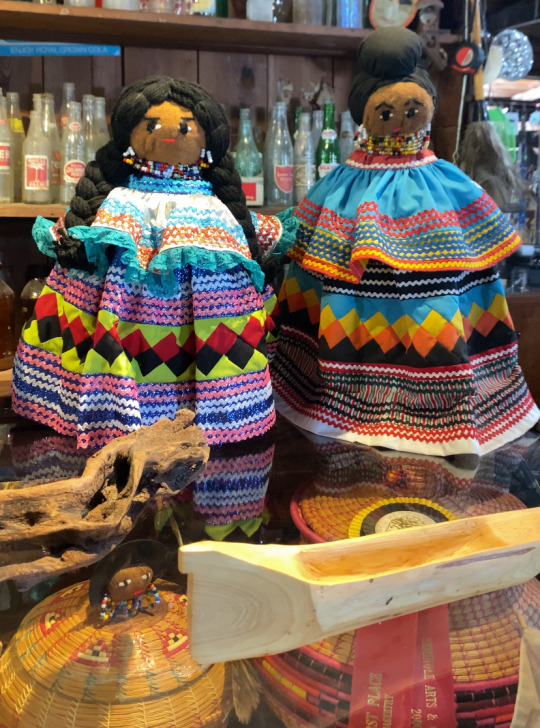
These people were forcibly removed, pushed South or murdered so their land could be taken in a conflict known to the United States as the First, Second and Third Seminole Wars. As they were pushed South, they encountered and assimilated various remaining populations of Pre-Columbian groups like the Calusa and Tequesta.
If you ask the modern members of these tribes, they will tell you it was a single war that is still being fought to this day, although with lawyers instead of weapons. You see, the Seminole and Miccosukee still have never signed a treaty with the US, and continue to have to fight for their Sovereignty and Land to this day. This has earned the Indigenous People of Florida the title of the Unconquered Peoples. Today, the tribes maintain traditional ways while also dealing with ever-encroaching settler beliefs and people. They still live off the land, but through the lens of eco-tourism most often rather than through subsistence living like many elders lived in their youth.
On my airboat trip, I got to stop and walk around Tear Island, a place where two Indigenous families began living in the 1800s and then abandoned in the 1920s. Being on these far off Islands, surrounded by the swamp and only accessible by boat, is where I feel most connected to my own Indigenous Taino ancestors, who would have traversed this same place but in a dugout canoe rather than an Airboat. The spirits of generations of people who lived and passed on are still here, within the water and trees, but also gathering around the cooking chickee when a fire is lit by their descendants.
High Tide at Chokoloskee
Known as the Western Gateway to the Everglades, we have Everglades City. It borders the Big Cypress Preserve and is a great place to stop to visit the Museum of the Everglades. The first settlers came here in the 1800s, it was incorporated in 1923. Past Everglades though, lies Chokoloskee. An Island with a Seminole name meaning ‘Old House’. This Island was only reachable by boat until 1956 when the bridge was built. John Weeks, the first permanent settler of Naples was one of the first settlers here as well. Before that, it was inhabited by the Calusa for more than 1,500 years.
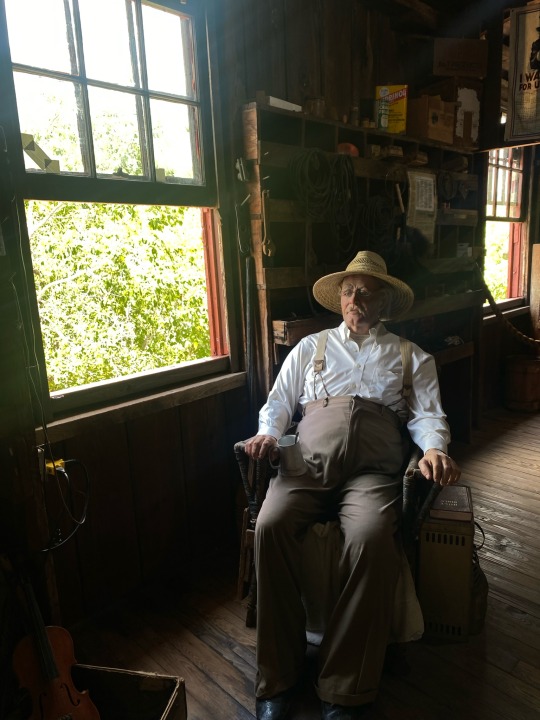
Stop by HavAnnA Cafe on your way to the southern tip of the Island where you’ll find a large red building on stilts. This is the Smallwood Store. Founded in 1906 by Ted Smallwood, this store was one of the only places Indigenous and White Floridians could go to trade for necessities. Ted Smallwood was a well-known ally of the Seminole and Miccosukee peoples, even learning to speak the language. Today, his granddaughter runs the store which is a museum and gift shop. There is even a replica of Ted himself, pictured above.
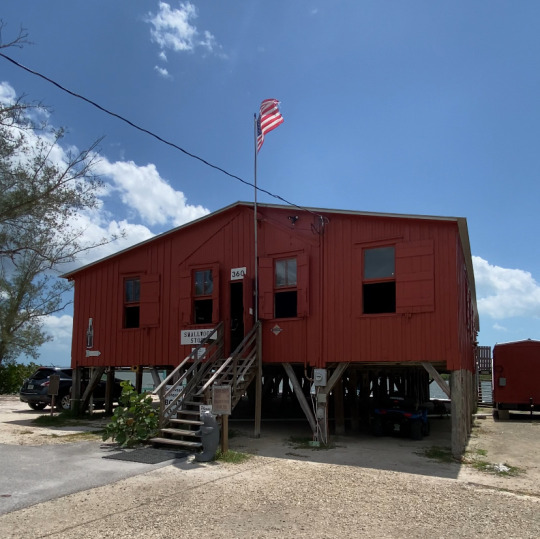
This history of this store and island is long, and tragic. A nearby massacre during the ‘Third Seminole War’ caused the remaining Indigenous people here to flee the Island. Later on, a famous murder of a well known criminal happened right outside the Smallwood Store. You can read more about both, and the 100 year anniversary of the building being raised here.

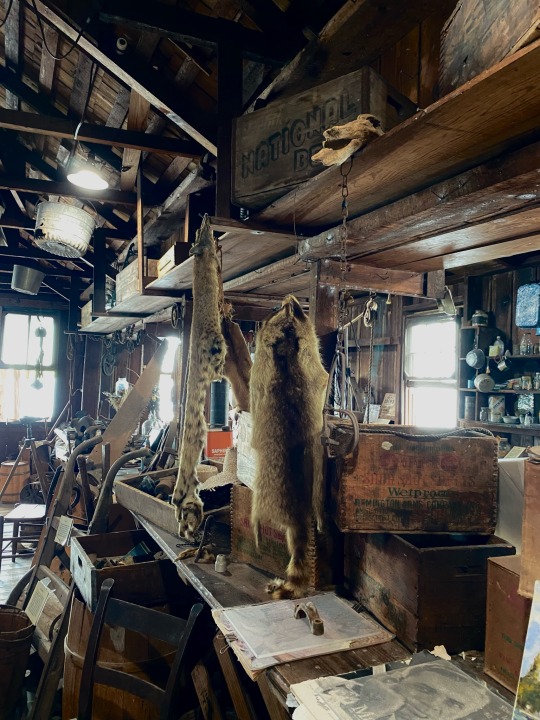
This is also a great spot to see where the fresh water of the Everglades meets the saltwater of the Florida Bay. Definitely give this place a visit.
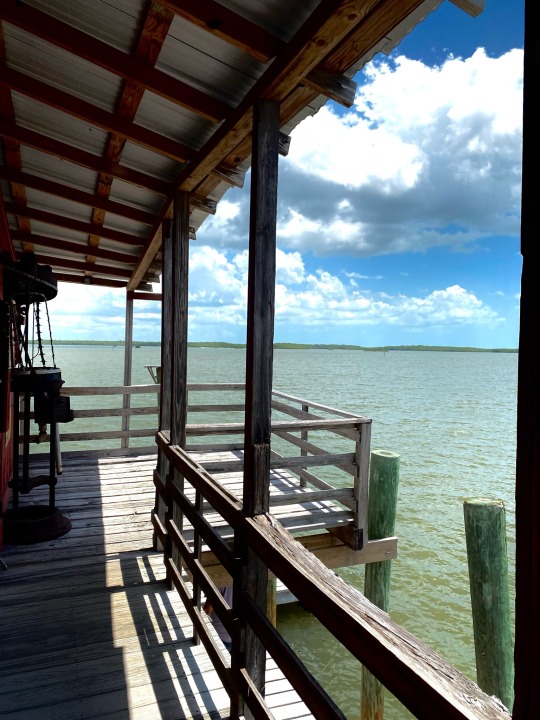
Splitting Storms: An Indigenous Folk Protection Charm
For some time now, I have noted the striking similarities between Seminole and Taíno beliefs around Twins and Weather. We even share a simple protection charm to ward off a bad storm I will share to you all.
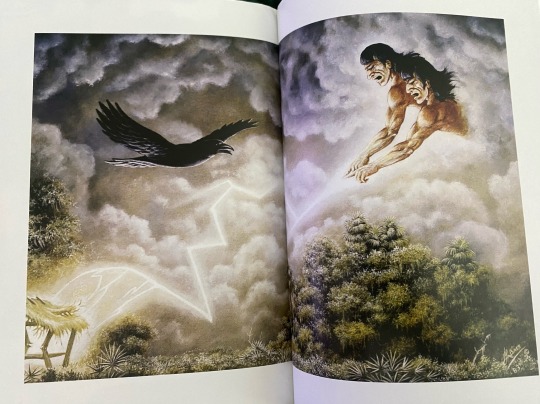
In Seminole belief, Twins are intrinsically tied to the weather. Many elders believed that keeping twins together can be dangerous, and they should be raised separately. To them, one is Thunder and the other is Lightning, even going as far to saying that having two twins in the same chickee can cause it to be struck.
In Taíno myth, we have two sets of twins associated with weather. Boinayel and Marohu are the Cemi related to the Wet and Dry seasons, Boinayel being the Raingiver and Marohu literally meaning “Without Clouds”. Then we have the ones who I would say share similarities to the Seminole Twins, Coatrisque and Gautaubá. These are Twin sons of the violent aspect of Atabey, known as Guabancex, Cacique of winds. Coatrisque is torrential rains, while Guatauba is Thunder and Lightning himself.

The charm is very well documented in both groups, as well as many others, and very straightforward. It’s the underlying belief that makes these two charms so similar. The linked article from earlier even includes a brief explanation of it.
Basically, when you know a big storm is coming, you want to place an axe in a spot on the front of your house, usually on a piling or piece of the roof that extends below the ground. Tie it down if you wish, for the winds. If you can, do it so the blade looks like it is coming down on the storm. The goal is to split the storm so it goes around the house. If we look at the myths, it’s clear the axe is there to split the Twins from each other, forcing them to go around the house, leaving it protected.
In the Caribbean, in practices like Lúcúmí and Palo Monte, we see the use of Matari, ‘Thunder Stones’. Genuine thunder stones from the Caribbean are actually said to be relics of Taíno axes, shaped like a tear drop almost, either passed down or found and used for various purposes, one being to ward off Lightning and Thunder!
Will Your Kids Know the Glades?
The Everglades are vital to my spiritual practice and lifestyle, as well as that of thousands of other Floridians. Even if you don’t live in the Swamp, its health affects the entire country.
Today, the dangers facing the Everglades are almost as abundant as the dangers inside it. Overdevelopment threatens the entire state. Just like we saw with Split Oak Forest recently. Environmental Protections seem to mean less and less because they don’t have the teeth to defend themselves. Included in these threatened protections is the sovereignty of the Seminole and Miccosukee Tribes, who just had to fight to keep Big Cypress as a preserve so they can continue their traditional use. They are fighting to hold onto their Land to this day.
All while threatening the Traditional Use by Indigenous Peoples, they continue to allow oil drilling even approving new projects within Big Cypress. The Army Corps of Engineers also heavily harms the environment every year through mismanagement of Okechobee and of the water levels within the Glades. It is up to everyday Floridians to fight to protect and better manage this precious natural resource before its gone forever. It is up to Witches all over to be stewards of our Lands, wherever that is. For us Florida Witches, we need to organize, donate and hex our politicians.
Luz 🕯️
#witchcraft#florida#bioregional animism#bruja#brujeria#florida witch#santeria#swamp witch#witch#traditional witchcraft#folk witchcraft#folk magic#folkloric witch#folk witch#espiritismo#santería#caribbean#everglades#animism#taino spirituality#taino#indigenous#cuban#witches#seminole#miccosukee#big cypress
25 notes
·
View notes
Text
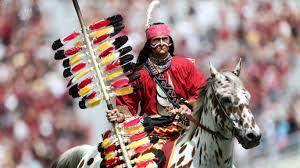



The Seminole are a Native American people who developed in Florida in the 18th century. Today, they live in Oklahoma and Florida, and comprise three federally recognized tribes: the Seminole Nation of Oklahoma, the Seminole Tribe of Florida, and the Miccosukee Tribe of Indians of Florida, as well as independent groups.
The word "Seminole" is almost certainly derived from the Creek word simanó-li. This has been variously translated as "frontiersman", "outcast", "runaway", "separatist", and similar words. The Creek word may be derived from the Spanish word cimarrón, meaning "runaway" or "wild one", historically used for certain Native American groups in Florida.

Native American refugees from northern wars, such as the Yuchi and Yamasee after the Yamasee War in South Carolina, migrated into Spanish Florida in the early 18th century. More arrived in the second half of the 18th century, as the Lower Creeks, part of the Muscogee people, began to migrate from several of their towns into Florida to evade the dominance of the Upper Creeks and pressure from encroaching colonists from the Province of Carolina. They spoke primarily Hitchiti, of which Mikasuki is a dialect. This is the primary traditional language spoken today by the Miccosukee in Florida. Joining them were several bands of Choctaw, many of whom were native to western Florida. Some Chickasaw had also left Georgia due to conflicts with colonists and their Native American allies. Also fleeing to Florida were African Americans who had escaped from slavery in the Southern Colonies
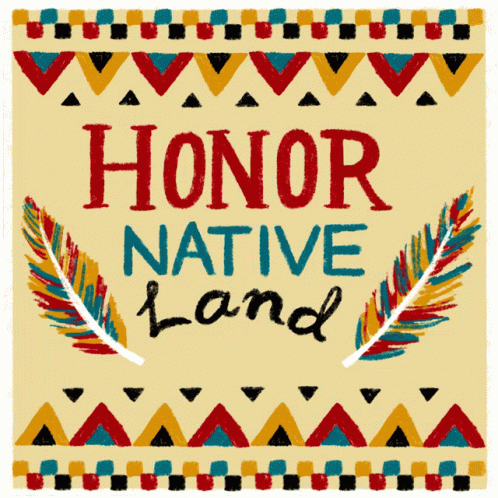
As they established themselves in northern and peninsular Florida throughout the 1700s, the various new arrivals intermingled with each other and with the few remaining indigenous people. In a process of ethnogenesis, they constructed a new culture which they called "Seminole", a derivative of the Mvskoke' (a Creek language) word simano-li, an adaptation of the Spanish cimarrón which means "wild" (in their case, "wild men"), or "runaway" [men].[ The Seminole were a heterogeneous tribe made up of mostly Lower Creeks from Georgia, who by the time of the Creek War (1813–1814) numbered about 4,000 in Florida. At that time, numerous refugees of the Red Sticks migrated south, adding about 2,000 people to the population. They were Creek-speaking Muscogee, and were the ancestors of most of the later Creek-speaking Seminole. In addition, a few hundred escaped African-American slaves (known as the Black Seminoles) had settled near the Seminole towns and, to a lesser extent, Native Americans from other tribes, and some white Americans. The unified Seminole spoke two languages: Creek and Mikasuki (mutually intelligible with its dialect Hitchiti), two among the Muskogean languages family. Creek became the dominant language for political and social discourse, so Mikasuki speakers learned it if participating in high-level negotiations. The Muskogean language group includes Choctaw and Chickasaw, associated with two other major Southeastern tribes.
In part due to the arrival of Native Americans from other cultures, the Seminole became increasingly independent of other Creek groups and established their own identity through ethnogenesis. They developed a thriving trade network by the time of the British and second Spanish periods (roughly 1767–1821). The tribe expanded considerably during this time, and was further supplemented from the late 18th century by escaped slaves from Southern plantations who settled near and paid tribute to Seminole towns. The latter became known as Black Seminoles, although they kept many facets of their own Gullah culture.
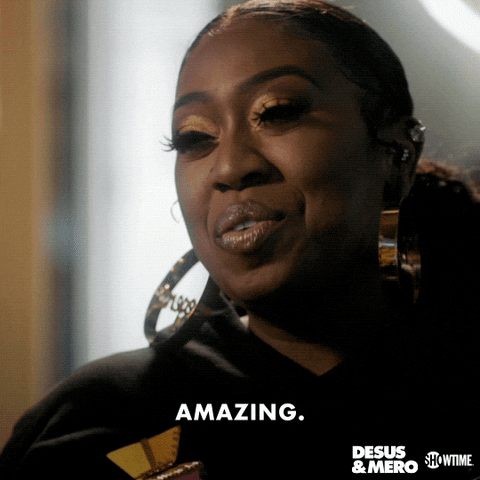
During the colonial years, the Seminole were on relatively good terms with both the Spanish and the British. In 1784, after the American Revolutionary War, Britain came to a settlement with Spain and transferred East and West Florida to it.
The Spanish Empire's decline enabled the Seminole to settle more deeply into Florida. They were led by a dynasty of chiefs of the Alachua chiefdom, founded in eastern Florida in the 18th century by Cowkeeper. Beginning in 1825, Micanopy was the principal chief of the unified Seminole, until his death in 1849, after removal to Indian Territory. This chiefly dynasty lasted past Removal, when the US forced the majority of Seminole to move from Florida to the Indian Territory (modern Oklahoma) after the Second Seminole War. Micanopy's sister's son, John Jumper, succeeded him in 1849 and, after his death in 1853, his brother Jim Jumper became principal chief. He was in power through the American Civil War, after which the U.S. government began to interfere with tribal government, supporting its own candidate for chief.
After raids by Anglo-American colonists on Seminole settlements in the mid-18th century, the Seminole retaliated by raiding the Southern Colonies (primarily Georgia), purportedly at the behest of the Spanish. The Seminoles also maintained a tradition of accepting escaped slaves from Southern plantations, infuriating planters in the American South by providing a route for their slaves to escape bondage.
After the United States achieved independence, the U.S. Army and local militia groups made increasingly frequent incursions into Spanish Florida to recapture escaped slaves living among the Seminole. American general Andrew Jackson's 1817–1818 campaign against the Seminoles became known as the First Seminole War. Though Spain decried the incursions into its territory, the United States effectively controlled the Florida panhandle after the war.


#african#afrakan#kemetic dreams#africans#brownskin#brown skin#afrakans#asians#asian#asian chick#asian babe#asian butt cheeks#asian beauty#asian cutie#asian babes#asian girl#asian girls#asian fashion#asian goddess#asian perfection#asian model#asian tattoos#asianbeauty#asian women#asianfemale#asiangirl#asianpeople#asiansexy#asianwomen#beautiful asian women
17 notes
·
View notes
Text
Hurricane Michael unearths hidden history at ‘Negro Fort’ where 270 escaped slaves died – ASALH – The Founders of Black History Month
https://asalh.org/hurricane-michael-unearths-hidden-history-at-negro-fort-where-270-escaped-slaves-died/
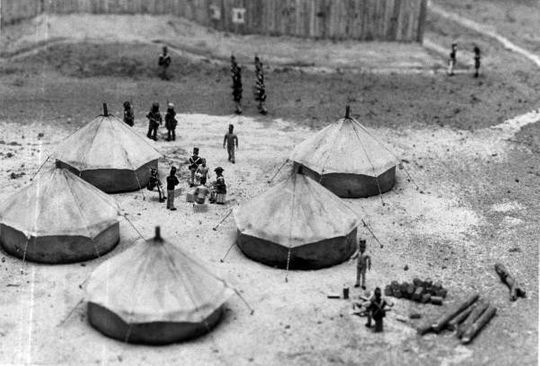
PROSPECT BLUFF — Two hundred years ago, a post overlooking the Apalachicola River housed what historians say was the largest community of freed slaves in North America at the time.
Hurricane Michael has given archaeologists an unprecedented opportunity to study its story, a significant tale of black resistance that ended in bloodshed.
The site, also known as Fort Gadsden, is about 70 miles southwest of Tallahassee in the Apalachicola National Forest near the hamlet of Sumatra.
British lived at Prospect Bluff with allied escaped slaves, called Maroons, who joined the British military in exchange for freedom, along with Seminole, Creek, Miccosukee and Choctaw tribe members.
The Negro Fort, which was built on the site by the British during the War of 1812, became a haven for escaped slaves. Inside, 300 barrels of gunpowder were stored, and defended by both women and men.
More:The Negro Fort: a haven for escaped slaves that fell to deadliest cannon shot in U.S. history
Wary of the group of armed former slaves in Spanish Florida living so close to the United States border, U.S. soldiers began to attack. On July 27, 1816, U.S. forces led by Colonel Duncan Clinch ventured down the river and fired a single shot at the fort’s magazine. It exploded, killing 270 escaped slaves and tribes people who were inside. Those who survived were forced back into slavery.
Managed by the U.S. Forest Service, which purchased it in the 1940s, the site has been preserved as a National Historic Landmark and park. Because of that, it was never excavated for artifacts, except in 1963 by Florida State University, mainly to identify structural remains.
“It’s a really intriguing story. There’s so much new ground there that historians of the past never really got into,” said Dale Cox, a Jackson County-based historian.
In an ironic way, Hurricane Michael has changed that — an isolated upsideof the devastating storm.
The October Category 5 hurricane caused extensive damage to the site, toppling about 100 trees. Most of the debris has been cleared, but under the remaining massive roots, archaeologists began this month to dig and sift through the soil, uncovering small artifacts and documenting archaeological features revealed by the upturned trees.
The effort is funded by a $15,000 grant awarded from the National Park Service and is in partnership with the Southeast Archaeological Center.
"The easy, low-hanging fruit is European trade ware that dates to that time period. But when you have ceramics that were made by the locals, it's even more unique and special," said U.S. Forest Service Archaeologist Rhonda Kimbrough. "For one thing, there's not much of it, and we don't have a whole lot of historical records other than the European view from what life in these Maroon communities was like."
So far, Kimbrough and others have found bits of Seminole ceramics, shards of British black glass and gun flint and pipe smoking fragments. They’ve also located the area of a field oven, a large circular ditch that surrounds a fire pit.
The fort was recently inducted into the National Park Service’s Underground Railroad Network to Freedom.
"It’s like connecting the sites, pearls on a string," said Kimbrough, "because these sites, even though they’re spread all over the place, they’re connected by one thing, which is resistance to slavery."
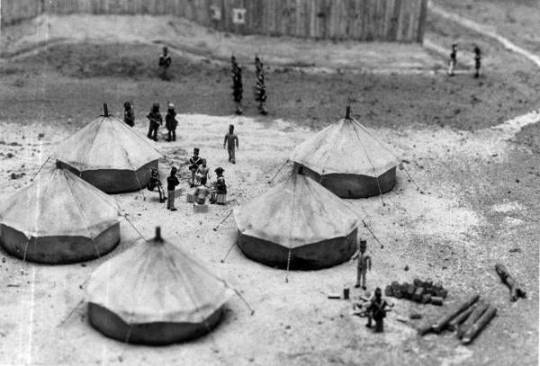
It's been a slow process of sifting through Census records, which are private for 72 years before release, international archives of Great Britain as well as Spanish archives in Cuba. But Cox is on a quest to name as many as possible.
The people who lived in the Maroon community were very skilled, he said. Many were masons, woodworkers, farmers. They tended the surrounding melon and squash fields, but little is known precisely about their day-to-day lives.
The area has always been ideal for settling, given its higher elevation and clearings amid the river's mostly swampy perimeter, said Andrea Repp, a U.S. Forest Service archaeologist. Prior to European occupation, the site was sacred to natives and was named Achackweithle, which resembles the words for "standing view" in Creek, according to the Florida Geological Survey.
Shack, 76, is a descendant of Maroons. His great great grandfather escaped a North Carolina plantation, married a part-Native American woman and settled in Marianna. He remembers his grandmother's stories about the Prospect Bluff community.
"I remember her telling us about the 'Colored Fort' and all the colored folk who died," he said. "A lot of black history wasn't taught. A lot of our history is lost, and some of it we won't get back. I'm glad that there's a renewed interest in capturing the history that I thought was lost."
#Hurricane Michael unearths hidden history at ‘Negro Fort’ where 270 escaped slaves died#florida#Negro Fort#Seminoles#Black Freedmen#Black
8 notes
·
View notes
Text
Apes in the Glades: a divisive Florida mystery

OCHOPEE – The drone of cicadas, the flat river of grass and gators lurking by the roadside, only their eyes visible above the black water: this is the Florida Everglades. It is a region that has long been imbued with fascinating history both haunting and beautiful, from being the location of marijuana smuggling routes (or as the locals call it, square grouper) and a hiding spot for killers on the run. But deep in the swamp lurks another source of intrigue: the skunk ape.
Also known as Florida’s Bigfoot, the hairy biped has been a lifelong pursuit of Ochopee, Florida local David Shealy. He describes the skunk ape as being between six and seven feet tall, covered in hair and incredibly smelly. Since spotting the creature near his home at the northern end of Everglades National Park at age 10, Shealy has made it his life’s work to find this elusive character. He has reported other sightings since then, once in 1998 and most famously in 2001 when he recorded video footage of the creature trudging through the swamp, which is available on YouTube.
Shealy is the founder of the Skunk Ape Research Headquarters in Ochopee. It’s one of several of Tamiami Trail’s roadside attractions (including the world’s smallest post office) and includes a campground, collection of live pythons and alligators, a gift shop and plans to expand. The building also houses Shealy’s two casts of skunk ape tracks. In 2000 he even applied for a grant from the Collier County Tourism Development Council, which was denied.
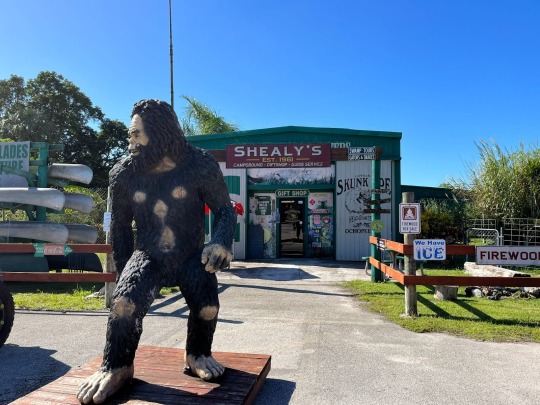
Sightings of skunk apes have been reported since the 1950s and ‘60s. One discrepancy, however, is that the native Seminole and Miccosukee tribes have a legend of the skunk ape in their culture, too. For clarity, the tribes are separate politically but not culturally, according to the Seminole Tribe of Florida. Tara Backhouse, the collections manager at the Seminole Ah-Tah-Thi-Ki Museum said in an email that, “there’s definitely not anything written down, and I don’t believe it’s a real Seminole legend in any way.” Shealy says something different: “That’s not the case at all and I grew up here with the Indians.” Indeed, Shealy's property is not far from the Miccosukee reservation. He recounted a story that Miccosukee tribal member Michael Frank told him about a time during the Seminole Wars. “At that time an Indian scout left the village and went into the Everglades, and he returned with a story that he had seen a group of men that were very large and covered with hair.” Shealy says there are as many as nine skunk apes in the Everglades. According to him they smell because they spend time in alligator holes, and they make a low bassy cooing growl. When he performs the skunk ape call, it sounds a lot like an alligator bellow. Shealy has a response for that, too. “I have big alligators that roar every time the garbage truck comes in so I know gators really good and it's not a gator.”
So did Shealy make it all up? Some locals think so. The picture that many residents of the nearby Everglades City paint is that Shealy simply wanted to make more money. Some call him a fraud, some call him a scientific researcher. When I met him, though, the first thing I understood about David Shealy is that he is a storyteller. He has many tales of encounters with Florida's bigfoot, some his and some from other people, but all of them captivating. He spoke of a time when he collected a hair sample from one encounter but the next day two unidentified federal agents, “The men in black” as Shealy calls them, who came to his home and confiscated the sample, never to be heard from again. In another story a woman named Mary Billie was chopping down palm fronds for a chickee hut. As she was hacking at the fronds one fell away and she was face to face with the skunk ape.
Despite the chorus of skunk ape deniers, there are others who support Shealy’s work. Brad Bertelli is the author of The Florida Keys Skunk Ape Files, which is a work of fiction based on real reports of encounters with the cryptid. Included in the book is a real clipping from an 1874 newspaper that reads, “Key West has a ghost covered with hair and about the size of a horse.” Bertelli says, “It reads to me like a typical skunk ape or bigfoot sighting.” And one of the earliest reports of such. Another story that inspired his book is a family on Key Largo who witnessed a smelly hairy creature on their property, which frightened them so much they moved out of the Keys entirely.
Both skunk ape aficionados have responses for the nonbelievers. Shealy says, “It’s not a good attitude to have because what they are doing is possibly putting a threatened or endangered species at risk and that they really need to do their research, possibly go out on their own. Just discounting it is doing an injustice to our native wildlife.” For Bertelli, “A lot of it has to do with not being willing to engage with something that is unknown. There are things out there bigger than ourselves. You have to keep an open mind.”
Fact or fiction, stories like these captivate people’s imaginations, and have for a long time. Like Bertelli says, “When you look back these bigfoot creatures have been sighted on six of the seven continents. When we go back hundreds and hundreds of years, every culture has their story about them.” So keep an open mind, and keep an eye out next time you’re in the Everglades.
#skunk ape#florida skunk ape#cryptozoology#florida myths#ochopee#skunk ape headquarters#david shealy
15 notes
·
View notes
Text

The #Seminole are a Native American people who developed in Florida in the 18th century. Today, they live in Oklahoma and Florida, and comprise three federally recognized tribes: the Seminole Nation of Oklahoma, the Seminole Tribe of Florida, and the Miccosukee Tribe of Indians of Florida, as well as independent groups. The Seminole
2 notes
·
View notes
Text

Native American Heritage Month
Betty Osceola - Environmental Activist - Miccosukee Tribe
10 notes
·
View notes
Text
BETTY OSCEOLA // ACTIVIST
“She is a Native American Everglades grandmother, environmental activist, educator, anti-fracking and clean water advocate. She is a member of the Miccosukee Tribe of Indians of Florida from the Panther Clan. Osceola was born and raised in the Everglades. She spent her upbringing living off the land, hunting and fishing with her father. She is an airboat captain and the operator of Buffalo Tiger Airboat Tours on Tamiami Trail in Miami, Florida.”

1 note
·
View note
Link
EPA awards $15 million grant to Miccosukee tribe for greenhouse gas reduction initiatives
0 notes
Text
Fwd: Postdoc: UMiami.TransgenerationalEffects
Begin forwarded message: > From: [email protected] > Subject: Postdoc: UMiami.TransgenerationalEffects > Date: 20 September 2024 at 05:43:37 BST > To: [email protected] > > > > Hiring a research associate to follow through on the molecular bench > portion on my NIH NIEHS R00 project. The project involves examining > the genetic and epigenetic changes underlying the transgenerational > effects of cadmium exposure in zebrafish and the potential of selenium > to mitigate cadmium toxicity. We're nearing the end of the NIH funded > project, so the project has a strict timeline for completion (e.g., > RNA extractions, qRT-PCR, RNA seq, bisulfite sequencing). Individuals > with experience in molecular benchwork are encouraged to apply. > > Primary responsibility includes providing leadership in research, > performing laboratory work as needed, analyzing genetic and genomic > datasets, writing peer-reviewed papers and asisting with grants. > > Direct all inquiries to Dr. Delia Shelton ([email protected]). Please > include your CV and a writing sample for full consideration. > > > Delia S. Shelton, PhD > > she/ella > Cox Science Building > Room 29 > Assistant Professor > Biology Department > University of Miami > #BlackLivesMatter > deliashelton.com > > > > The University of Miami acknowledges the ancestral and traditional > territories of the Seminole Tribe of Florida, the Council of the Original > Miccosukee Seminole Nation Aboriginal Peoples and the Miccosukee Tribe > of Indians of Florida who are the original owners and custodians of the > land upon which we stand and learn. > > > [email protected] > > (to subscribe/unsubscribe the EvolDir send mail to > [email protected]
0 notes
Text

Accessed via: https://flamingomag.com/2024/04/11/betty-osceola-everglades/
This is Betty Osceola of the Miccosukee tribe. Her work in the Florida Everglades has been crucial in restoring the natural balance to the area where developments have disturbed the flow of water for decades, flooding tribal lands and destructively draining ares of the everglades. Osceola works with both native and non-native peoples, directly countering the harmful effects of this such as removing invasive species. She also fosters a more sustainable approach to the environment, holding community gatherings such as prayer walks to raise awareness of the destructive relationship which has been held with the land. It is with this shift in mindset, championed by many native women activists, that we can genuinely and sustainably heal our environment.
0 notes
Text




Native American and First Nations Flag Wars: Round 1, Bracket 1
19 notes
·
View notes
Text
Swamp Witch’s Guide to Pine Trees
For this post, I will be talking about lore of Pine across cultures, with a focus on my local species here in Florida, the Slash Pine (Pinus elliottii). I highly recommend researching the species native to your area, and forming a relationship with those trees.
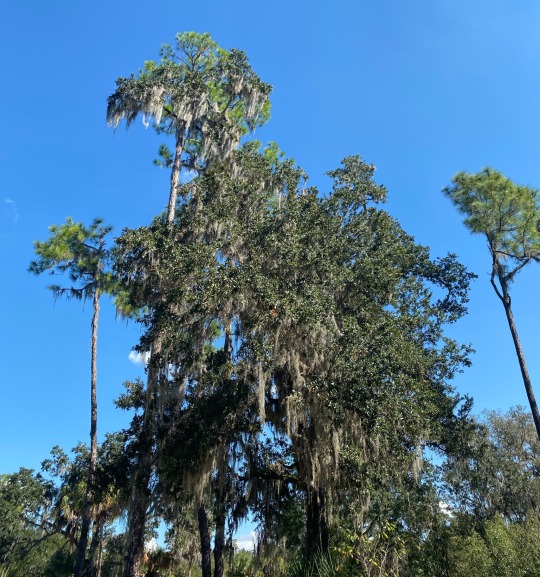
Ecology:
Slash Pines are known to grow very tall and quickly, and thrive in the Scrub and Flatwoods. They have an avg. lifespan of about 150 years. They reach up and chase the Sun, and call down Lightning. This Lightning starts Fires that prevent Hardwood Hammock Species from moving in and dominating the scrub effectively protecting the biome. It is an evergreen and a conifer.
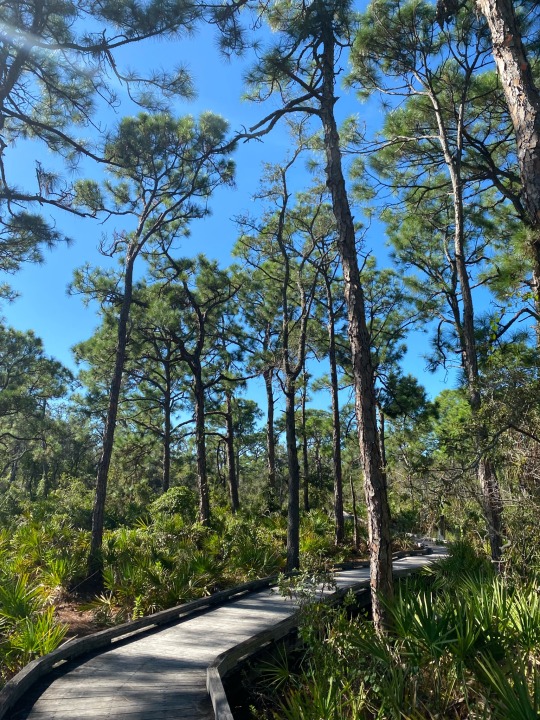
Pine as a Healer and Protector:
Pines are a common symbol of pushing through the winter, and its never fading needles remind us of the Sunny days to come. In my experience, Pine can have a very Solar nature when approached in matters of cleansing and healing is a very fiery cleansing energy, swords come to mind. Pine has been burned used in crosses and strung about the home to dispel melancholy it has also been used as medicine by Indigenous People in FL for centuries. This is where I draw my associations Avich healing from. This Solar energy can also cause it to come off a bit posh, but you just have to pay appropriately.
Slash Pine is known for its hard, dense wood. Also, as its role as protector through bringing fires to fend off the encroaching Oaks and Palms, clearly has the virtues of a Fighter and Protector. Once you have established a connection with a few dices, call on them to gaud you or to burn up any hexes with the next fire the call! Burning some needles or bark is also a great way to call the spirit into your space for workings and
communication.
Pine and the Otherworld
Pine being associated with the Otherworld is a mix of UPG and Tradition. In some places, Pines are considered Saturian and Connected to the Dead. Personally, I do consider Pine an Ancestral Ally as my family are Pineros from Isla de Pinos Cuba. I find Pine helps to be an intermediary between a practitioner and Spirits Ancestors and Others. The Seminole and Miccosukee tribes have belief regarding Pine as it relates to some of their Land Spirits. The type of spirit who live in the Pine are called 'Este Lopocke' and are 'little people' similar to the Fair Folk in the mischief and connection to the Plant world. This further shows its quality as an Otherworldly plant.
Offerings T have made to Pine Spirits:
-Tobacco, Loose or burned
-Alcohol, on an altar or sprinked on the plant
-Copper Coins
-Water from a Local River
-Prayer and Song
-Blood, your water
-Devoted and dedicated time
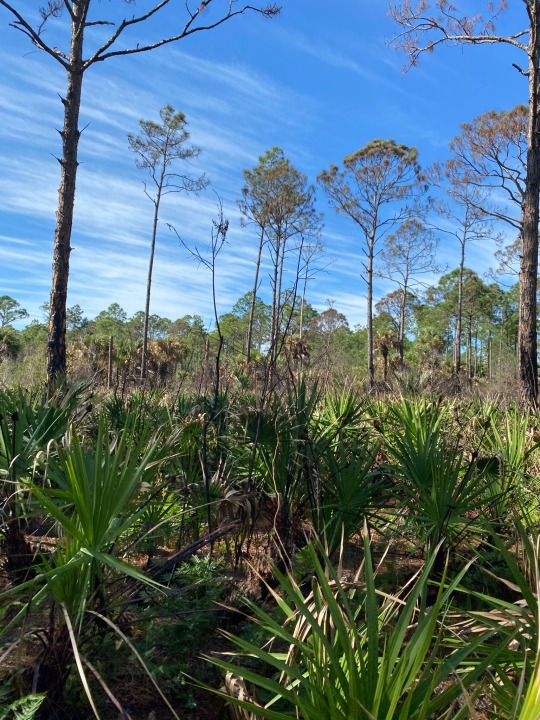
It can't go unsaid when talking about Florida Pines that many people, mainly poor black folks, unjustly lost their lives or became disabled from working in Turpentine plants in the 19th and 20th Centuries. This tragic history is intrinsically linked to the Tree now. You can read some of the recorded folklore from these Florida Turpentine Farms in the book ‘Of Mules and Men’ by Zora Neale Hurston. Pine is a great ally to have in your spiritual court and I love working with it as a protective, cleansing force.
Luz y Progreso 🕯️
#witchcraft#florida#bioregional animism#bruja#brujeria#florida witch#santeria#swamp witch#witch#traditional witchcraft#folk witch#folk magic#dual faith
21 notes
·
View notes
Text
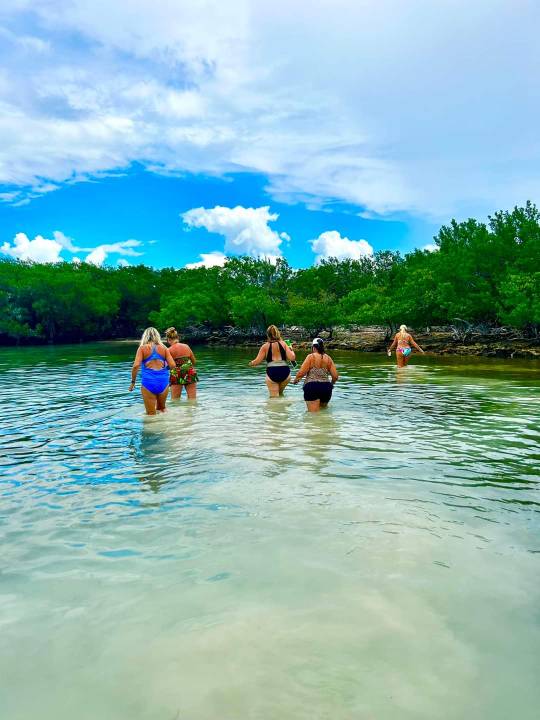
Wade up with Capt Rob and explore Indian Key. Abandoned in the 1840’s this tiny Island was once the 2nd wealthiest community in the United States. Ruins of the city still exist 200 years later. Just one stop of the day among many.
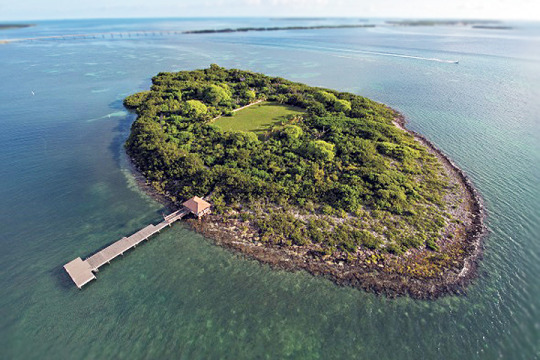
History
Native Americans began visiting and living on Indian Key around A.D. 800, and were likely a submissive tribe to either the Tequesta or Calusa chiefdoms, however, the exact nature of the relationship between the Keys Indians and these other groups has yet to be defined. Of interesting note is the fact that even in the 1840s and 50s, the Indians around the Keys were called "Spanish Speaking Indians" and not identified as Seminole of Miccosukee.
0 notes